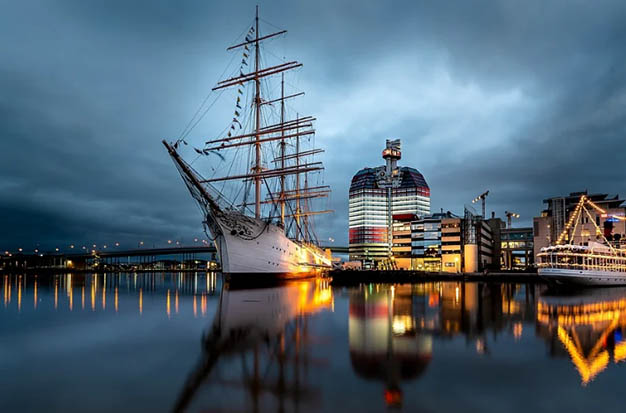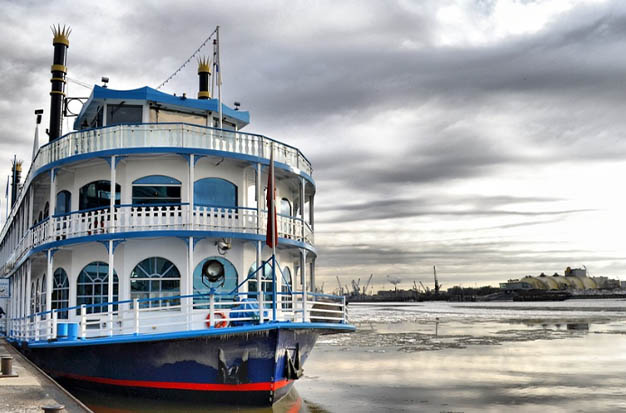You might be curious about how quickly a cruise ship can travel if you’re about to board a luxurious vessel and set out on an unforgettable ocean voyage. There are actually a few ways to respond to that question. Cruise ships can move surprisingly quickly, but they rarely do.
The Difference Between Mph And Knots
Speed on land is expressed in miles per hour, or mpg. Speed is expressed in knots on land and in the air. This has an intriguing cause.
In the past, sailors would throw a buoyant object over the bow of their ship and then time how long it took for the stern to catch up with the object to determine their speed. Known as a “Dutchman’s log,” this speed-measuring method typically used a piece of wood. In the late 1700s, sailors devised and employed a wedge-shaped, lead-weighted “chip log” for the same purpose. The chipboard was the world’s first navigational tool, according to Bright Hub Engineering, with its attached reel of rope knotted at regular intervals.
The sailor’s chipboard required two people to deploy—one to hold the rope reel and the other toss the tool. The duration it took for the boat to depart from the chip log was calculated using an hourglass. Although this antiquated measuring device could only approximate speed, it did give us the term “knots,” which is still used to describe ship speed today.
Knowing the formula makes converting knots to miles per hour simple. According to Boat Safe, one knot is roughly equivalent to 1.15 miles, so multiplying knots by 1.15077945 will show you how fast a ship travels in mpg.
How Fast Do Cruise Ships Go?
A cruise ship is a large boat with all the amenities you could possibly need for a relaxing vacation, such as lodging, sports, and recreation areas, dining options, and entertainment venues. It is somewhat surprising that a cruise ship can float on water and travel great distances considering its weight, which is typically over 70,000 tons, or 140 million pounds. Its enormous size also raises the question of how quickly it can move.
There are numerous varieties of cruise ships. Some of them are designed to contain more rooms or amenities, while others are built with speed in mind. Normal cruise ships cruise at 21 to 24 knots per hour, but high-speed cruise ships can reach 30 knots or more. The majority of cruise ships are propelled forward or backward by gas turbines or diesel-electric engines, which cut through the water. The power output of an engine, along with the size and weight of the cruise ship, all affect its speed.
Even though typical cruise ships cruise at 21 to 24 knots, they are actually capable of going even faster. They must limit fuel consumption, which is one of the factors contributing to their slower speed. Cruise ships consume a lot of fuel, and the “mileage” per gallon of fuel is measured in feet, not in miles. For a typical cruise ship to travel just a few hundred feet, it needs about 10 gallons of fuel. When a ship is moving at top speed, it uses more fuel, and there might not be enough left for it to finish the journey. Slower travel is more economical and will guarantee that the ship will arrive at its destination on time. Additionally, the speed of cruise ships varies depending on where they are in their voyages. For example, when they are in open water, they tend to travel faster, and when they are nearing a port, they tend to travel slower.
Read More: How Much Fuel Does A Cruise Ship Use?
What Cruise Ship Is The Fastest In The World?
Speed is not a primary goal for Royal Caribbean cruise ships because they are designed to be leisure vessels rather than ocean liners that are intended to transport passengers from one port to another.
However, traveling at high speeds is still necessary for the event of an onboard emergency or to avoid bad weather.
With a top speed of 30 knots or 35 mph, the Queen Mary 2 of Cunard is/was generally regarded as the fastest ship. She was only marginally slower than the sister ship Queen Elizabeth 2, which had a top speed of 32 knots.
In order to achieve her higher-than-average speeds, Queen Mary 2 uses an integrated electric propulsion system as opposed to the common diesel-electric setup used on many ships.
Aside from those Cunard’s vessels, many modern cruise ships reach top speeds that are similar to or slightly faster than 25 knots for Harmony of the Seas.

Why Do Cruise Ships Move At A Slower Pace?
Cruise ships not only rarely sail at their top speed, but they also frequently sail at much slower speeds.
A cruise ship may slow down for a variety of reasons aside from fuel conservation. Undoubtedly, the amount of fuel consumed can have a significant impact on the choice of speed, but other factors may call for a slower speed.
Close proximity of ports of call is one typical explanation. Every hour that a cruise ship spends in port after their scheduled arrival costs the company money in docking fees. A ship will therefore slow down so that they dock precisely at the time scheduled and not earlier.
On days when the ship is at sea, it’s typical for it to take its time so that passengers can take advantage of the good weather. When the distance between ports is close, this is especially true.
The captain of a ship may occasionally even slow it down so that everyone on board can see a sunset or other passing scenery.
Government regulations in some regions of the world mandate that cruise ships move slowly.
How Does Size Affect Speed And Fuel Consumption?
Like the vehicles we drive, cruise ships come in a variety of sizes. Size has an impact on a ship’s fuel consumption and speed. Generally speaking, the force needed to accelerate any vehicle—be it a car or a boat—increases with its weight. More fuel is needed for greater force.
Massive cruise ships require a lot of fuel to keep up an average cruising speed. By the turn of the twenty-first century, some cruise ships weighed as much as 220,000 tons, compared to the 20,000 to 30,000 tons of large cruise ships built in the 1970s.
Of course, huge cruise ships require a lot of fuel to operate. Larger cruise ships can burn up to 250 tons of fuel per day, which equates to over 80,000 gallons of gasoline. A gallon of fuel is burned every 30 to 60 feet of travel.
On a cruise ship, however, even modest gains in productivity can have a big impact. Even though they generally move at the same speed, smaller ships, for instance, use a lot less fuel to cover the same distance than larger ones. The cruise ships at Windstar are considerably smaller than the average ship, which results in less fuel use and fewer passengers.
While the average large cruise ship can accommodate up to 7,000 passengers—the equivalent of a small floating town—our largest ship at Windstar can only accommodate 342 people. You can expect attentive service and roomy suites in this setting, which offers a much more warm and cozy atmosphere. You’ll also have access to special, empty ports that huge ships are forced to avoid due to their size.
Conclusion
When you are late for work or need to make it to the store before it closes, speed can be crucial. Other times, like when you’re on a cruise, you might want to avoid or at least not think about speed. Fortunately, cruise ships have to move more slowly than what we’re used to with cars or airplanes, which is great for tourists who love to see the world by ship. A cruise ship wouldn’t be able to sail through beautiful scenery without consuming too much fuel.

